The meadow mushroom leads a complicated life in North America. Or, more accurately, the forager trying to identify the edible meadow mushroom accurately is apt to be challenged. It isn’t that the Agaricus species called meadow mushrooms are difficult to identify (although they can be); it’s more about name accuracy, and the bad habit of early Americans to apply European names to species.
Many Agaricus genus mushrooms look alike, and identification can be frustrating in general. Some species are edible, some are slightly poisonous, and some are toxic. It is imperative to pay close attention to this species when foraging – it is not really a beginner mushroom.
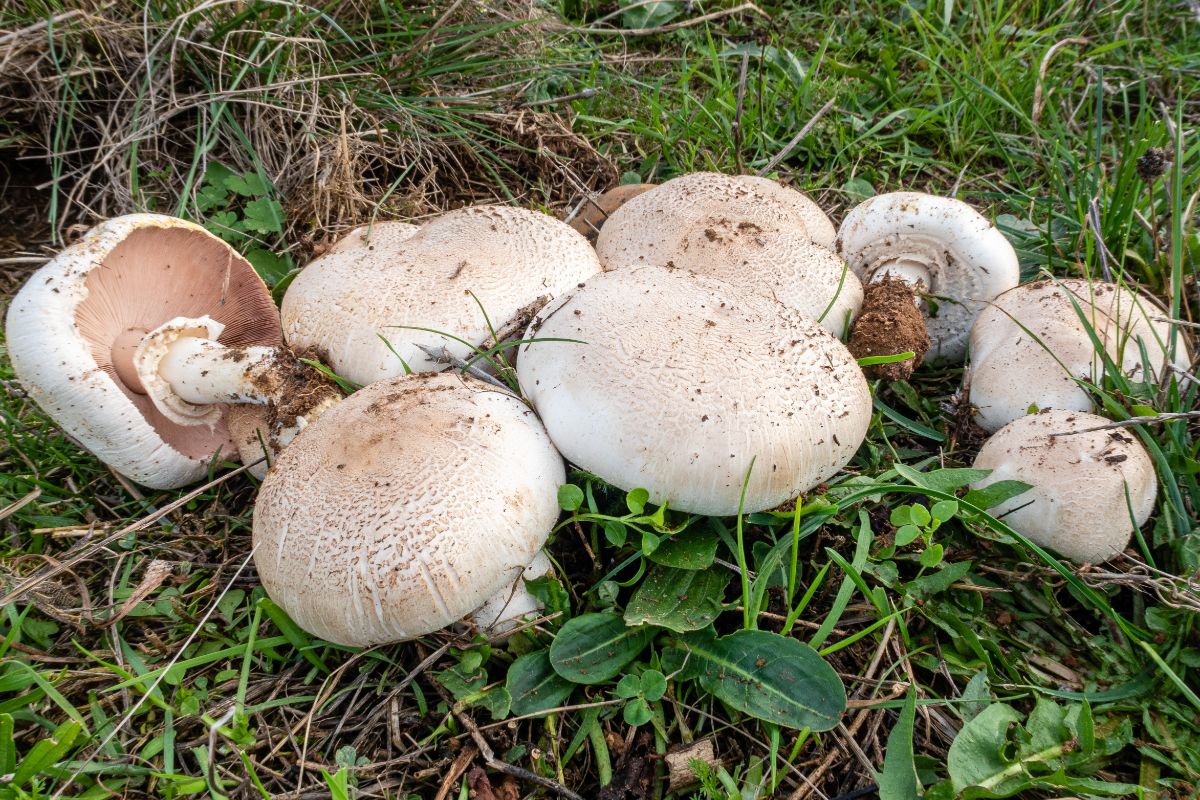
Jump to:
All About Meadow Mushrooms
Meadow mushrooms are the close cousin of the grocery store button mushroom (Agaricus bisporus). And, in fact, they look exceedingly similar. They are edible and taste much like the button and portabellos we know well, except they’re free if you find them in the fields.
Until quite recently (2016), all meadow mushroom-looking species in North America were lumped under the scientific name Agaricus campestris. Almost all mushroom foraging guides and literature, even now, use this scientific name for the meadow mushroom in the US. So, don’t be surprised to see this name widely used in any identification guides you have on hand.
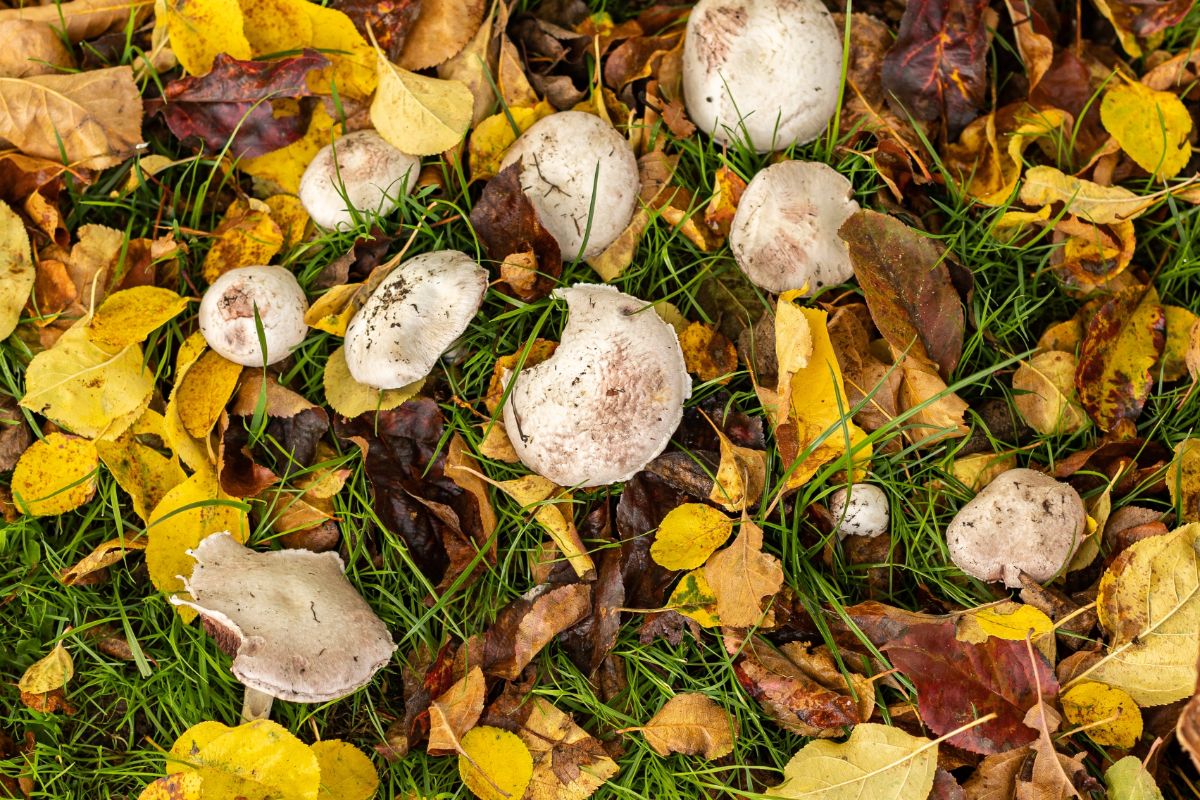
And this worked out just fine for mycologists and foragers alike, at least as far as basic identification went. However, in his extensive research of Agaricus species in North America, Richard Kerrigan discovered that Agaricus campestris likely doesn’t exist in North America. Or, if it does, it is not as common as we make it.
Instead, several separate species fall into the meadow mushroom category on this continent. These species tend to be either east or west coast species, with the Rocky Mountains as the borderline between regions. In appearance, they all look pretty similar, if not identical, but they do have slight variances. Without a microscope, determining which species you have can be complicated.
For the forager, this might not mean much, as the identifying characteristics are similar enough to determine if you’ve found this popular and widespread edible species. But, if you like being exact, you might find yourself pulling out your hair.

Meadow Mushroom Identification
The following descriptions are the typical characteristics of the meadow mushroom. Following the guide is a brief introduction to the different North American species, with their own peculiarities outlined.
Season
Autumn
Habitat
The meadow mushroom grows alone or in large groupings, sometimes overlapping, in meadows, fields, and other grassy areas. It is a common species that forms fairy rings. This mushroom only grows from the ground, never from trees.

Identification
Cap
Meadow mushroom caps are whitish, light buff, or slightly grayish. They start out bell-shaped as buttons, then flatten out. With advanced maturity, the edges may turn upwards. The cap is undecorated and smooth or might have very fine tan silky fibers or light scaling. Caps range in size from 1.5-4.5 inches wide.
Gills
The gills of the meadow mushroom start out pinkish, then turn dark chocolate brown with age. They are crowded and not attached to the stem. The pink coloring is more like salmon pink or mauve – when mycologists use this color adjective, they do not mean hot pink or bright pink (usually).
In youth, the gills are covered by a thin white veil. The veil breaks apart with age, revealing the gills.

Stem
Meadow mushroom stems are white, equally thick, undecorated, and 1.5-1.75 inches long. Around the upper portion of the stem is a fragile white skirt ring, a remnant of the partial veil that used to cover the gills. The very base of the stem is usually a little pointed or tapered, which is best seen when the entire specimen is picked.
Flesh & Odor
The flesh of the meadow mushroom is white and does not change color when cut or bruised. It does not have a distinctive smell or taste.
Spore Print
Chocolate brown


Key Identification Features:
- Whitish or grayish-white cap
- Bell-shaped cap in youth that flattens out with age
- Mauve/pink gills in youth that turn chocolate brown
- White dense stem
- Gills not attached to the stem
- Thin white veil covering gills when young
- Thin white skirt around the upper stem after the veil breaks
- Flesh is white and does not change color when cut or bruised
- No distinctive scent


Meadow Mushroom Foraging
Since these mushrooms like to grow in big groups, it’s a great day when you find them – they’ll feed you for days! Ensure you check all the key identification points since there are so many similar-looking species in the Agaricus family.
Make sure you check EVERY SINGLE mushroom you pick. Edible and toxic species sometimes grow in frustrating proximity to each other.
Cut the stem of the mushroom off at the base, or carefully pluck the entire mushroom and cut off the dirty end. Picking the entire mushroom is also a great way to ensure you haven’t got a deadly amanita, which will have an egg-like sac at the base.
Younger specimens with pinkish or light chocolate brown gills are best for eating. Once the gills get super dark brown, the flavor deteriorates.


North American Meadow Mushroom Species
Agaricus porphyrocephalus
This meadow mushroom species appears in autumn in eastern and mid-western states. Its cap is covered with thin brown fibrous scales that radiate outwards from the center. Often, the scales take on a purplish tinge, but it is not always that distinguishable. The scaliness of the cap sets it apart from other similar species. The cap ranges in size from 1.5-4 inches wide, and the stem is 1.5-2.25 inches long.

Agaricus porphyrocephalus var. pallidus
This is a white variety of the above-described species. “Pallidus” means pale. It has a whitish cap and no brown scaling. It actually looks more like a “typical” meadow mushroom than its parent. Sometimes, the two variations can be found growing right next to each other. They are similar in size. This species may be more widespread, though, occurring in parts of western North America as well as in the midwest and east coast.
Agaricus andrewii
An eastern meadow mushroom, this species occurs east of the Great Plains. The cap ranges in size from 1.5-4.25 inches wide, and the stem is 1.5-2.75 inches long. In all aspects, it looks just as described in the meadow mushroom identification guide above. With age, it develops fine fibrous brown scales that radiate out from the center. It is unlikely to be differentiated from other meadow mushroom species without a microscope.

Agaricus argenteus/Agaricus braendlei (A. braendlei is the recently described proper name – for now they are interchangeable)
This meadow mushroom is indistinguishable from Agaricus andrewii, listed above, without a microscope. Their primary difference is spore size, which you can’t determine with the naked eye. This species also has the same distribution, being widespread east of the Great Plains.

Agaricus argenteus var. annetteae
A variation of the species above, this one has brown fibrous scales on the cap. It also appears in western states, specifically California and Alaska. It may be more widespread, but its exact range is unknown.

Meadow Mushroom Lookalikes
There are a few species that you should be very careful with when foraging meadow mushrooms. There are telltale signs of letting you know you don’t have a meadow mushroom, but you must be attentive. In addition to the problematic species, several other edible and non-edible (but not toxic) mushrooms look like the meadow mushroom.
Yellow Stainer (Agaricus xanthodermus)
At first glance, this Agaricus species looks identical to the meadow mushroom. It is commonly confused, which is problematic because it is poisonous. The yellow stainer, though, has a critical feature that sets it apart. The cap and stem turn a bright yellow immediately when cut or bruised. Additionally, it smells like iodine.
The yellow stainer causes terrible gastrointestinal distress. When cooked, it emits an intense (foul) sweet and acrid odor (phenol), so if you notice your meadow mushrooms smelling terrible, you might have the wrong fungus!

Destroying Angel [Amanita bisporigera (east coast) & Amanita ocreata (west coast)]
Destroying angels are all white, just like the meadow mushroom, which causes lots of confusion. You do not want to confuse these, though. As the common name suggests, the destroying angel is not just toxic; it can also be deadly.
There are several key differences between the meadow mushrooms and destroying angels, so pay close attention, and you won’t have any difficulties. The destroying angel has a white sac at the base, the volva. As it grows, the fruiting body breaks through the white sac, leaving remnants around the stem. So, even though it has the same skirt around the stem, the destroying angel has a telltale white egg sac volva around the base. You may have to dig in the dirt to see it, but it is unmistakable.
Additionally, destroying angels have white gills, not pink or brown, and a white spore print. If you are ever in doubt, a spore print will significantly help.
This guide to identifying Amanita species is a great starting place to learn the differences so you don’t make any toxic mistakes.

California Agaricus (Agaricus californicus)
This cousin of the meadow mushroom is all white, stains yellow, and shares many of the same features. It is also toxic to many people. Some folks report eating it without issue, but it causes terrible gastrointestinal issues for others, so it’s best to avoid this one.
California Agaricus specimens have a slight iodine-like scent. Also, they only grow in California and central Mexico, so you only have to worry about this species if you live in those areas.

Horse Mushroom (Agaricus arvensis)
A closely related species, the horse mushroom has a white cap and white stem without any scales or markings. It differs from the meadow mushroom with its strong anise scent and tendency to lightly bruise yellow when handled. Horse mushrooms are an edible Agaricus species.

The Other Horse Mushroom (Agaricus fissuratus)
Like the “original” horse mushroom, Agaricus arvensis, this species is white with pink or brown gills, stains yellow, has a white cog-wheel-like ring around the stem, and grows in grassy areas like lawns and meadows. At first glance, telling these two apart is challenging. Thankfully, this species is also edible!
The primary difference is the smell. The horse mushroom, A. arvensis, smells like anise, while this other almost identical species smells like almonds. If you don’t have a good sniffer, you might have problems discerning between these two. Unless you have a microscope.

Wood Mushroom (Agaricus silvicola)
The wood mushroom looks quite similar to the meadow mushroom, with a few primary differences. The wood mushroom, as the name implies, grows in the woods. This is a different habitat from the meadow mushrooms. Wood mushrooms also smell like anise, which sets them apart from the scentless meadow mushroom.

Spring Agaricus (Agaricus bitorquis)
Spring Agaricus fruits in spring, the opposite of the fall meadow mushroom. The skirt on the stem of the Spring Agaricus is distinctive and sets it apart. It is a double ring, with a thick upward-facing ring and a thinner lower ring.
In all other features, it looks very much like the meadow mushroom with a white cap and stem, pink or brown gills, and grows on disturbed land, including fields.
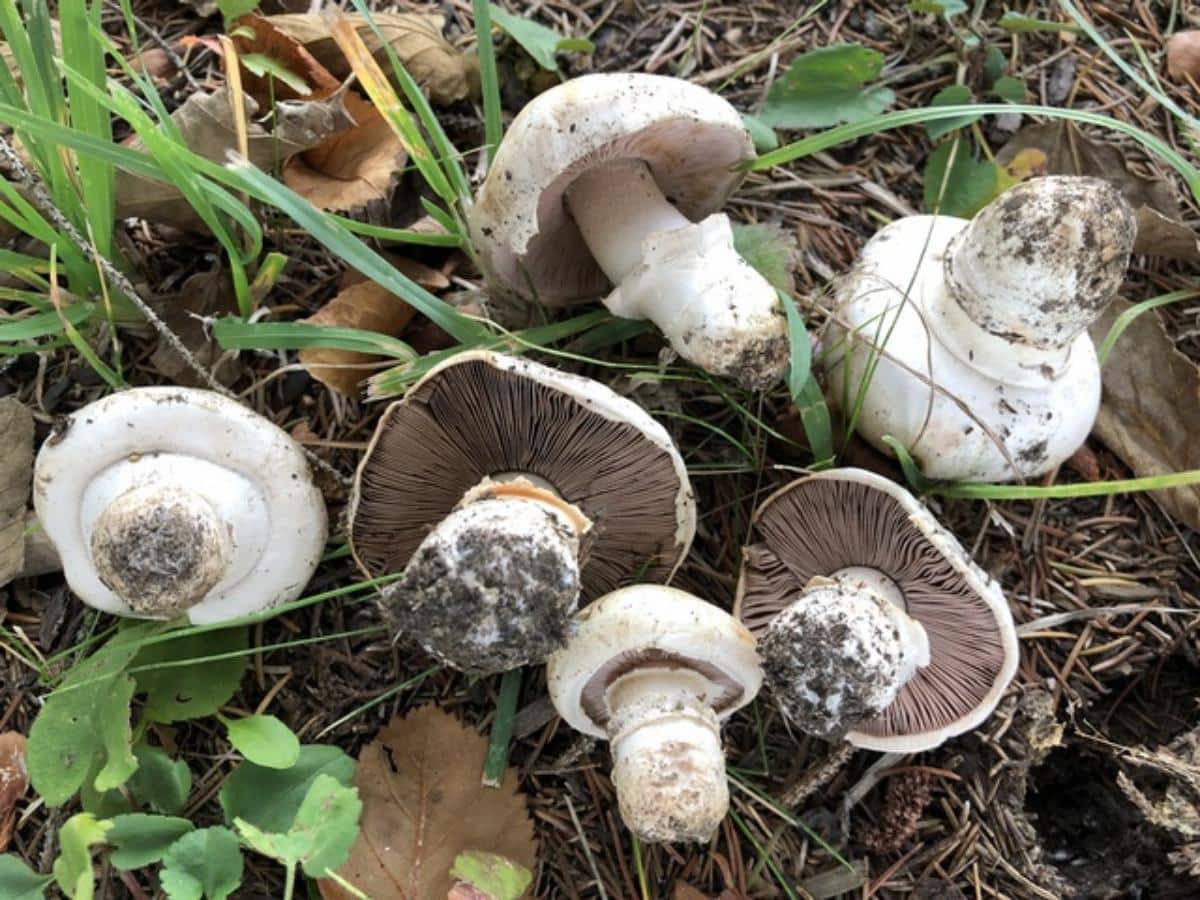
Cooking With Meadow Mushrooms
Use meadow mushrooms in any recipe that calls for button mushrooms or portabellos. They are interchangeable with the standard grocery store mushrooms and are excellent baked, sauteed, broiled, grilled, stir-fried, and in soups.
The meadow mushroom is slightly softer than the common grocery store mushroom, but it has a better flavor and scent. It isn’t all that different, just slightly better. This may be due to it growing wild instead of being cultivated.
Meadow mushrooms can be dried and powdered. Or dried in chunks to add to soups later. They also do well cooked first, then frozen, just like button mushrooms.
Meadow Mushroom recipes:
- Meadow Mushroom Biscuits and Gravy
- Meadow Mushrooms Caramelized Onion Tarts
- Classic Meadow Mushroom Soup with Wild Mushroom and Herbed Ricotta Tartines
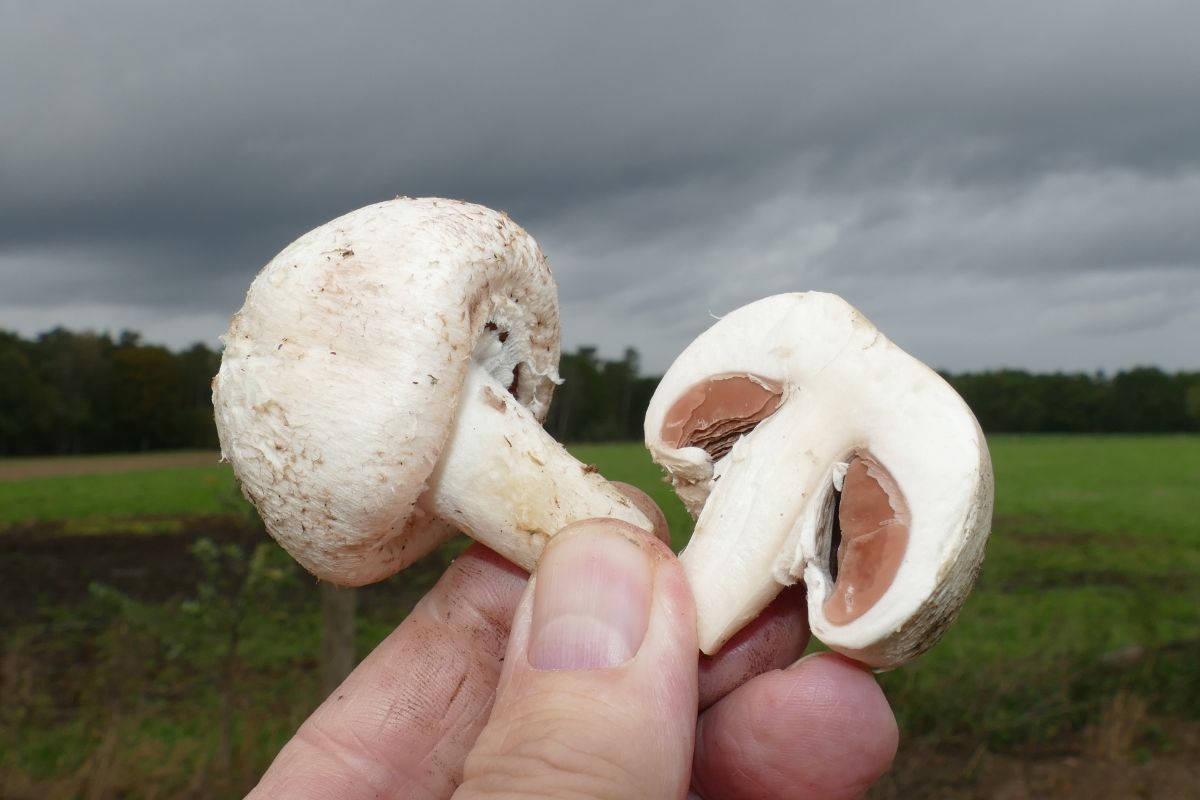
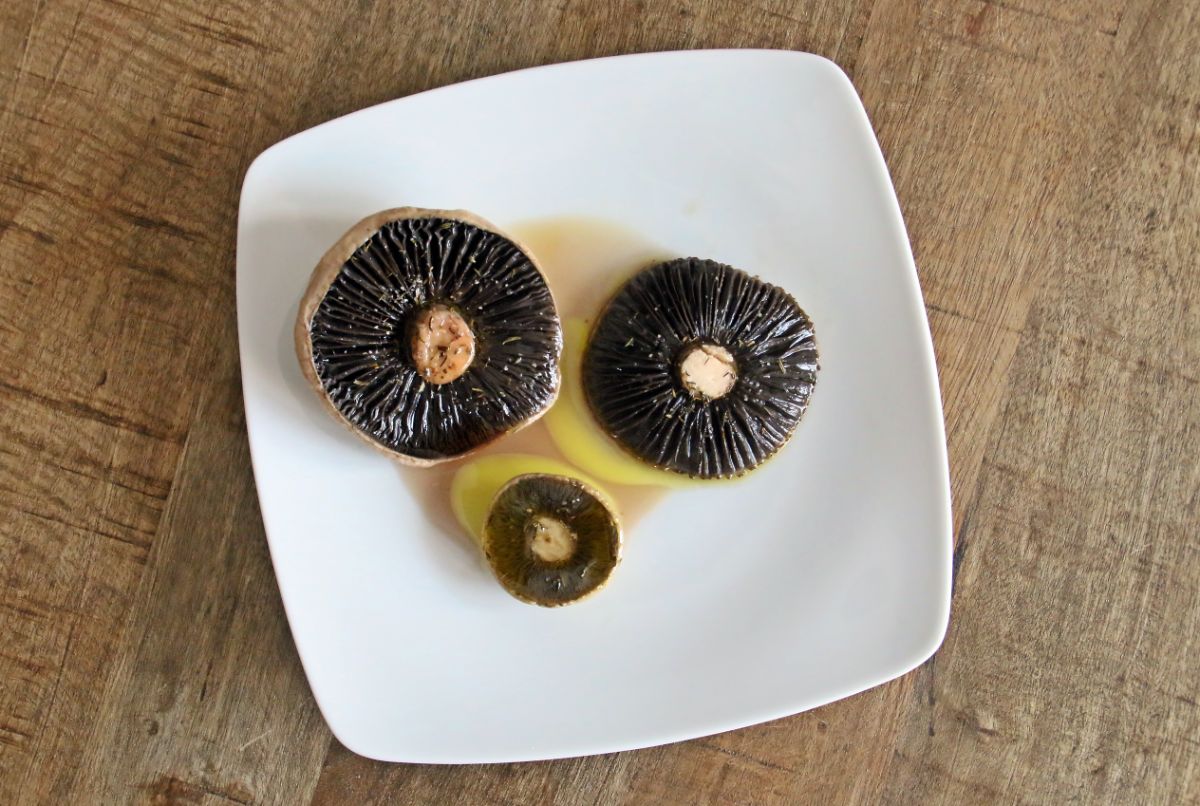
Common Questions About Meadow Mushrooms
Can I grow meadow mushrooms?
Yes! In fact, quite a few commercial operations are growing this species. Its growth needs are similar to button mushrooms (Agaricus bisporus).


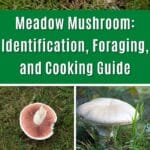


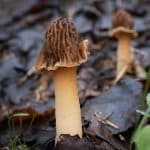



Corene M Cipolletti says
Thank you for this informative article! I am currently hunting for mushrooms, and this is the most detailed description of meadow mushrooms that I have found!
Jenny says
You are very welcome and happy mushroom hunting!!!!!!
Angela Dansie says
This is a wonderfully comprehensive guide to the meadow type mushrooms. It turns out I have been mislabeling my finds. What I was calling campestris are either argenteus var. Annette are or bitorquis (I’ll have to look for the double ring). We find them in spring/early summer. And what I was calling arvensis are probably fissuratus because there was no anise smell. Though not knowing the proper name, my dad always goes out with me & confirms my finds since he’s been foraging mushrooms since the 70s. We also found destroying angels in the same habitat, so I look every one over VERY carefully.
I did get some meadow mushrooms to grow in my tomato/pepper hothouse last year. I just threw any that were past prime on the horse manure rich soil in there & they were popping up through October. It was a very fun experiment. I even had some pop up in December in a pepper plant that I dug up to winter over as a houseplant.
Jenny says
The Agaricus species are notoriously difficult to tell apart, and in many cases, it comes down to scent. I’m glad you have your dad to rely on; that’s so wonderful that you have him as a resource! Meadow mushrooms in the hot house — Amazing! And so much reward for little effort — love it!
Marilyn Lysohir says
I know if you scratch and the flesh turns yellow it is not a good fellow but if it turns orange is it OK? The gills are pink etc. Compliments to you on your details for identifying!
Jenny says
You are welcome, and thank you, too! So, in general, its not good to follow “rules” about staining. There may be orange or red staining ones that are fine and some that aren’t. Mushrooms don’t follow patterns like we would hope! As far as what it is, I don’t know. A lot depends on where you live — there are over 100 Agaricus species in North America. This is a good place to start. The key at the end might help figuring out the species https://www.mushroomexpert.com/agaricus.html
DB Cooper says
Hi Jenny, very good site; just picked some shaggy manes and another that has a nice rounded cap that is whitish with brown scales. The gills are white and the stem has a distinct kind of furry ring just below the cap before it opens. Any ideas? Thanks, DB.
PS: we are NE Washington state
Jenny says
Thanks! I’d make a guess that it might be false parasol https://www.mushroom-appreciation.com/toxic-false-parasol.html
However, for a better answer, post pictures and all relevant information (read pinned/featured post) in our facebook group https://www.facebook.com/groups/340690111324762
Maya says
I just picked some that I thought were meadows, but there was some confusion as the stem didn’t bruise yellow, but the cap did, but only slightly. I really did not want to throw out all those mushrooms, so I did a test. I sliced some up and cooked them (as I couldn’t figure out what “phenol” smells like), and what an icky smell. Nothing like mushroom. Smelled like I was cooking latex paint, and the mushrooms also turned REALLY yellow upon hitting the hot fat. So, there’s another way to tell if a mushroom isn’t a meadow. Cook it and see if it smells like mushroom, or just plain weird. I’m really disappointed, as I’ve picked meadows from this same front yard. Good to know about the yellow bruising.
Jenny says
Oh my, what a way to find out! Glad the mushrooms let you know they’d be awful. And so happy you followed your instincts and did due diligence. Happy foraging and hopefully some excellent edibles in your future
samantha says
i think we found the wood mushrooms today. Are there any toxic ones to avoid that could be confused for the wood mushroom? I grew up collecting meadow mushrooms in the UK and it look exactly the same….. but emit that my nose cannot distinguish the anise smell though…. thanks for your great resource!
Jenny says
There are tons of Agaricus species (100+ in North America, but many are regional, seasonal etc.), so you have to be very careful with these. This guide on wood mushrooms will help with the toxic lookalikes. Get someone else to smell them too, if that will help. Smell is a huge part of the ID process with these species https://www.mushroom-appreciation.com/wood-mushroom.html
Edelyn says
Hi thank you for the information I just found a meadow mushroom please tell me it is this one is edible or not I’m confused.thank you
Jenny says
You can submit a photo to our facebook group, please make sure to read the pinned post to make sure you include all the relevant info https://www.facebook.com/groups/340690111324762
Marvin Hanner says
Why are my “meadow Mushrooms” growing now, in nearly mid-July. And why are they under trees in leafy litter? They have the pink gills, the veil covering the gills (very new), a thick stem that is not hollow and no cup at the bottom. I have had meadow mushrooms here in my yard for years, but they were always rather small (up to 1 3/4″). These are huge! Up to 5″ in diameter. Marv
‘
Jenny says
They start off small with pinkish gills and grow quite large and gills turn chocolate brown. Think about store bought button mushrooms and portabellos — same exact species at different stages of growth. That is a possibility. OR, you have a completely different species growing. It does still sound like its in the Agaricus family. Look into other Agaricus possibly
Bobby says
Thank you so much, this was very informative and I feel pretty confident that the the mushrooms growing all over the pasture hillside are in fact meadow mushrooms.
I’m going to harvest a couple
Thanks again